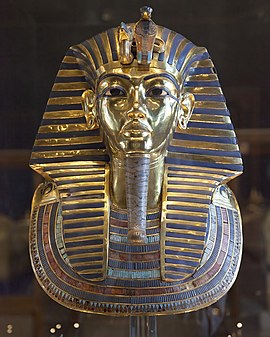
Deep within the Valley of the Kings, hidden beneath the desert sands, lay the final resting place of a pharaoh who, for centuries, remained a mystery. His name, King Tutankhamun, or simply King Tut, is now synonymous with the enigmatic allure of ancient Egypt. Join us on a journey to unravel the life, reign, and legacy of the boy king who captured the world’s imagination.
A Royal Enigma: The Early Life of Tutankhamun
Tutankhamun was born around 1341 BC in a time of political and religious turmoil. His parentage remains a subject of debate, but many historians believe he was the son of the infamous pharaoh Akhenaten and Queen Kiya, or Queen Tiye. At a tender age, he ascended to the throne, possibly between 8 and 10, following the death of his predecessors.
A Short and Significant Reign
Tutankhamun’s reign was short, spanning approximately nine years, but it was marked by significant changes. He inherited a kingdom grappling with the religious reforms initiated by his father, Akhenaten, who championed the worship of the sun god, Aten, to the exclusion of other deities.
Restoring Tradition: Tutankhamun’s Religious Reforms
One of Tutankhamun’s most significant actions as pharaoh was the restoration of traditional Egyptian religion. He reversed the radical monotheism of Akhenaten, returning to the veneration of gods like Amun and others. This move led to the shifting of the capital from Akhetaten (modern-day Amarna) back to Thebes, marking the resurgence of the city’s religious and political significance.
The Mystery of Tutankhamun’s Death
The circumstances of Tutankhamun’s death remain a subject of speculation. He died at a young age, around 18 or 19, and various theories have emerged, including a chariot accident, illness, or other factors. His untimely death marked the end of a tumultuous chapter in Egypt’s history.
The Discovery of KV62: Tutankhamun’s Tomb
The legacy of Tutankhamun would have faded into obscurity had it not been for a remarkable discovery in 1922. British archaeologist Howard Carter unearthed the nearly intact tomb of King Tutankhamun in the Valley of the Kings, forever altering the course of Egyptology.
Unveiling Treasures Fit for a King
Carter’s find was nothing short of a treasure trove. Tutankhamun’s tomb contained an astonishing array of funerary goods, including intricate jewelry, statues, chariots, furniture, and the iconic golden mask that adorned the mummy. This mask, a masterpiece of ancient craftsmanship, has become a global symbol of Egypt’s grandeur.
Legacy of a Boy King
While Tutankhamun’s reign was relatively unremarkable in terms of historical accomplishments, his tomb’s treasures have made him an enduring symbol of ancient Egypt’s magnificence. The artifacts from his tomb, now housed in the Egyptian Museum in Cairo, have captivated the world and continue to offer valuable insights into the culture, art, and daily life of the New Kingdom.
Tutankhamun’s story is one of mystery, discovery, and the enduring fascination of ancient Egypt. His reign, although brief, has left an indelible mark on the collective imagination, proving that even in the sands of time, the allure of the boy king endures.

Enjoy
First
book
10% Off



0 Comment